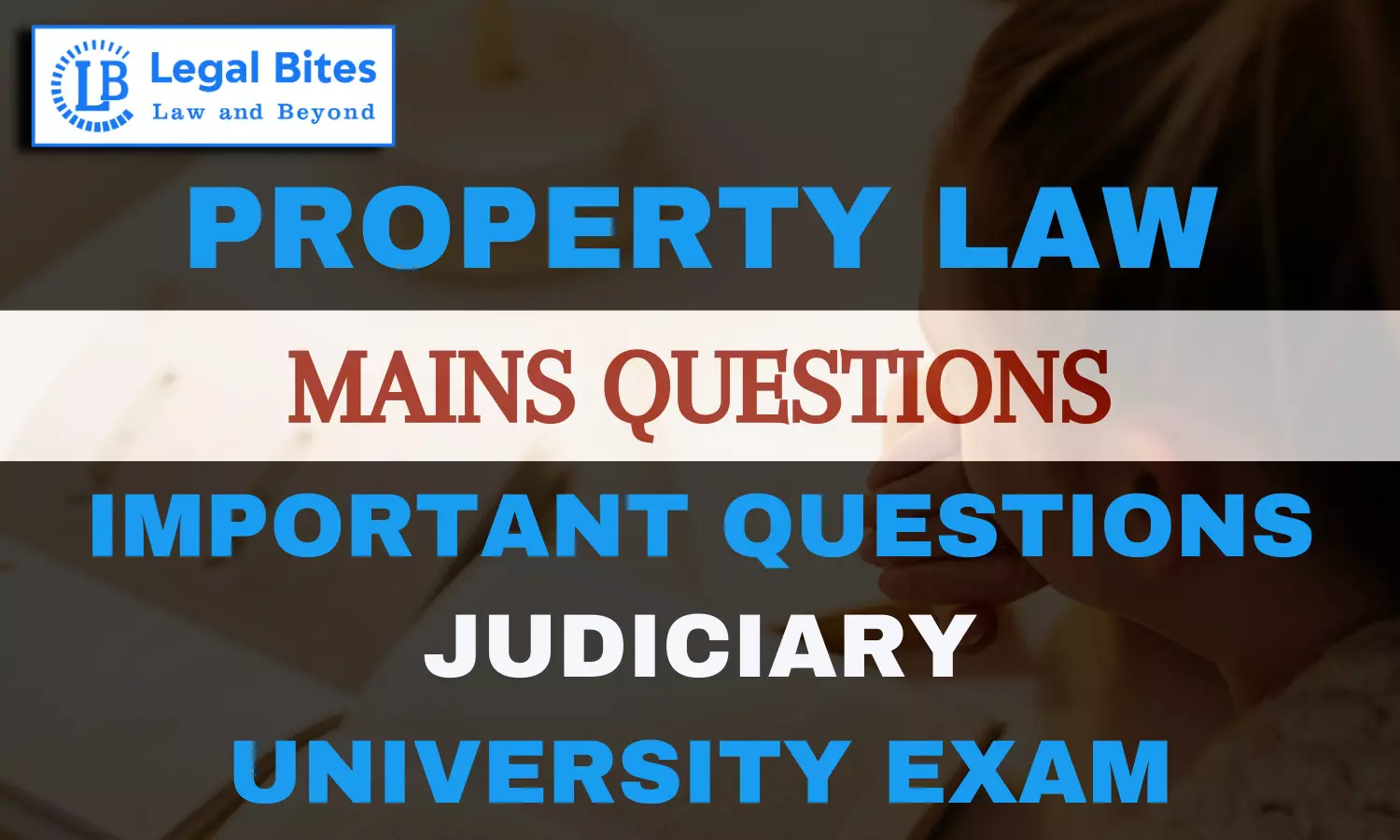What are the different types of mortgages?..... Briefly explain the key characteristics of each type.
Find the answer to the mains question of Property Law only on Legal Bites.

Question: What are the different types of mortgages recognised under the Transfer of Property Act, 1882? Briefly explain the key characteristics of each type. [OJS 2023]Find the answer to the mains question of Property Law only on Legal Bites. [What are the different types of mortgages recognised under the Transfer of Property Act, 1882? Briefly explain the key characteristics of each type.]AnswerUnder the Transfer of Property Act, 1882, six types of mortgages are recognized in Section 58....
Question: What are the different types of mortgages recognised under the Transfer of Property Act, 1882? Briefly explain the key characteristics of each type. [OJS 2023]
Find the answer to the mains question of Property Law only on Legal Bites. [What are the different types of mortgages recognised under the Transfer of Property Act, 1882? Briefly explain the key characteristics of each type.]
Answer
Under the Transfer of Property Act, 1882, six types of mortgages are recognized in Section 58. Each type has distinct features concerning the rights of the mortgagor and mortgagee. Here's a brief overview of each:
1. Simple Mortgage [Section 58(b)]
- Mortgagor does not deliver possession of the property.
- Mortgagor personally binds himself to repay the loan.
- In case of default, the mortgagee has the right to sell the mortgaged property through the court.
Example: A borrows ₹1 lakh from B and mortgages his land without giving possession. On default, B can file a suit to sell the land.
2. Mortgage by Conditional Sale [Section 58(c)]
- Ostensible sale of property with a condition:
- On default: sale becomes absolute.
- On repayment: sale becomes void, or buyer reconveys.
- No personal liability unless specifically agreed.
Example: A sells land to B, with the condition that if A repays within 5 years, B will retransfer. Otherwise, the sale becomes absolute.
3. Usufructuary Mortgage [Section 58(d)]
- Possession is delivered to the mortgagee.
- Mortgagee enjoys rents and profits in lieu of interest or principal.
- No personal liability to repay; no foreclosure or sale.
Example: A mortgages his house to B and lets B collect rent from tenants until the debt is satisfied.
4. English Mortgage [Section 58(e)]
- Mortgagor transfers property absolutely to the mortgagee.
- Mortgagor binds himself to repay on a fixed date.
- Mortgagee is bound to retransfer the property on repayment.
Example: A transfers property to B with a promise that B will retransfer it once A repays ₹5 lakh by 31st March.
5. Mortgage by Deposit of Title Deeds (Equitable Mortgage) [Section 58(f)]
- Created by depositing title deeds with the intent to create a security.
- No written mortgage deed is required.
- Recognised only in specified towns (e.g., Mumbai, Chennai, Kolkata, and notified places).
Example: A deposits property documents with B (a banker) in Mumbai to secure a loan.
6. Anomalous Mortgage [Section 58(g)]
- Any mortgage that does not fall under the above five types.
- May be a combination of different types or governed by custom or contract.
Example: A mortgage combining usufructuary rights and a right to sell on default.

Mayank Shekhar
Mayank is an alumnus of the prestigious Faculty of Law, Delhi University. Under his leadership, Legal Bites has been researching and developing resources through blogging, educational resources, competitions, and seminars.
